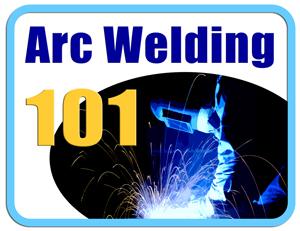- FMA
- The Fabricator
- FABTECH
- Canadian Metalworking
Categories
- Additive Manufacturing
- Aluminum Welding
- Arc Welding
- Assembly and Joining
- Automation and Robotics
- Bending and Forming
- Consumables
- Cutting and Weld Prep
- Electric Vehicles
- En Español
- Finishing
- Hydroforming
- Laser Cutting
- Laser Welding
- Machining
- Manufacturing Software
- Materials Handling
- Metals/Materials
- Oxyfuel Cutting
- Plasma Cutting
- Power Tools
- Punching and Other Holemaking
- Roll Forming
- Safety
- Sawing
- Shearing
- Shop Management
- Testing and Measuring
- Tube and Pipe Fabrication
- Tube and Pipe Production
- Waterjet Cutting
Industry Directory
Webcasts
Podcasts
FAB 40
Advertise
Subscribe
Account Login
Search
Arc Welding 101: Addressing linear porosity
- By Paul Cameron
- September 29, 2014
- Article
- Arc Welding
Q: We are experiencing linear porosity at the furthest point of penetration when welding heavy plate. The porosity is 0.3 mm dia., but it occurs regularly in every weld we’ve sectioned so far.
We are using a semiautomatic spray transfer process with a 0.045-in. ER70S-6 electrode, and a shielding gas mix of 91 percent argon (Ar), 5 percent carbon dioxide (CO2), and 4 percent oxygen (O2).
Ken P.
A: I suspect that your weld penetration profile is showing “finger penetration,” or a real deep area of penetration at the weld root. At this location, the profile is much deeper than it is wide. This will cause the area to open up during solidification.
Grab your copy of AWS D1.1 and check out the commentary section at C3.7.2, “Width/Depth Pass Limitations,” and Figure C-3.2, “Examples of Centerline Cracking.”
I was asked to troubleshoot a similar condition during a job interview for a former employer. To save money, they had switched from a 0.045-in.-dia. electrode to a 0.052-in.-dia. electrode. The high wire feed speed (WFS) with the larger-diameter electrode created a considerable increase in current, which equates to deeper root penetration.
Like you, they had this pore everywhere they sectioned, which I believe was more of a linear void. Although not popular, reducing the WFS eliminated the problem. P.S. I got the job!
Reducing current (WFS) typically will reduce this finger penetration, which should remedy your problem. One other thing: Yours is a weird shielding gas mixture. I’m not sure why you would go with so much oxygen, but I don’t know your whole story. If you can, replace the O2 with more CO2. Perhaps that will change your weld profile as well.
About the Author

Paul Cameron
Braun Intertec
4210 Highway 14 East
Rochester, MN 55904
About the Publication
subscribe now

The Welder, formerly known as Practical Welding Today, is a showcase of the real people who make the products we use and work with every day. This magazine has served the welding community in North America well for more than 20 years.
start your free subscription- Stay connected from anywhere

Easily access valuable industry resources now with full access to the digital edition of The Fabricator.

Easily access valuable industry resources now with full access to the digital edition of The Welder.

Easily access valuable industry resources now with full access to the digital edition of The Tube and Pipe Journal.
- Podcasting
- Podcast:
- The Fabricator Podcast
- Published:
- 04/16/2024
- Running Time:
- 63:29
In this episode of The Fabricator Podcast, Caleb Chamberlain, co-founder and CEO of OSH Cut, discusses his company’s...
- Industry Events
16th Annual Safety Conference
- April 30 - May 1, 2024
- Elgin,
Pipe and Tube Conference
- May 21 - 22, 2024
- Omaha, NE
World-Class Roll Forming Workshop
- June 5 - 6, 2024
- Louisville, KY
Advanced Laser Application Workshop
- June 25 - 27, 2024
- Novi, MI































